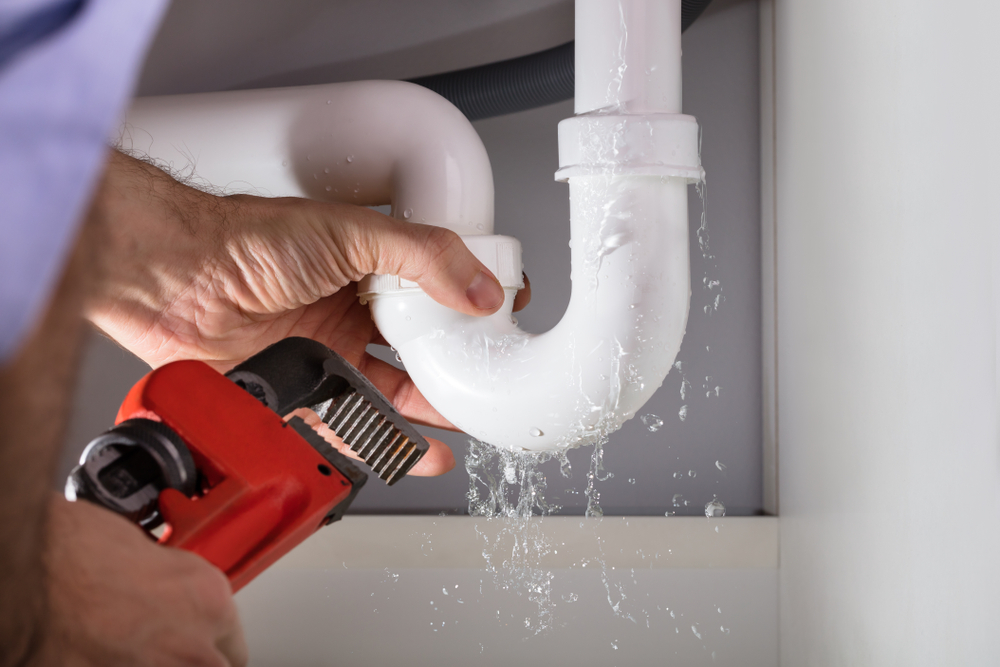Plumbing emergencies can be incredibly stressful and cause significant damage to your home. The damage can be extensive, impacting walls, flooring, furniture, and even the structural integrity of your home. Not to mention, the potential for mold growth and other health hazards increases if the situation isn’t addressed promptly.
Knowing how to react quickly and take steps to minimize damage is crucial during a plumbing emergency. By following a few important steps, you can mitigate the damage and ensure that your home remains safe and dry until professional help arrives. In this blog, we’ll discuss five essential steps to handle a plumbing emergency effectively.
Stop the Water Flow
The first and most critical step in any plumbing emergency is to stop the flow of water. This action can prevent further flooding and additional damage to your property. Here’s how to control your home’s water flow:
Locate the Main Water Shut-Off Valve
Every home has a main water shut-off valve, which controls the water supply to the entire house. It’s typically located near the water meter, usually in the basement, crawl space, or an exterior wall. Familiarize yourself with its location and ensure it’s easily accessible.
To shut off the main water valve, turn it clockwise until it stops. This will halt the water supply to your entire home, giving you time to address the plumbing issue and call your local emergency plumbers.
Don’t Forget About Individual Shut-Off Valves
For less severe plumbing emergencies, such as a leaking faucet or toilet, you can use individual shut-off valves. These valves are located near the fixtures and allow you to isolate the problem without shutting off the water to your entire home. Knowing the location of these valves and how to operate them can be extremely beneficial.
Assess the Damage and Contain the Leak
Once the water flow has been stopped, the next step is to assess the damage and contain the leak. This can help minimize water damage until professional help arrives.
Carefully inspect the area to determine the source of the leak and its severity. This will help you decide whether temporary repairs are possible or if you need immediate professional assistance.
Next, use buckets, towels, or pans to catch dripping water and prevent it from spreading to other areas of your home. If water is pooling on the floor, try using mops and towels to soak it up. Additionally, move any valuables, electronics, and furniture away from the affected area to prevent further damage.
Make Temporary Repairs (If Possible)
In some cases, you may be able to make temporary repairs to stop or reduce the leak. However, it’s important to remember that these fixes are not permanent solutions, and professional help will still be necessary.
For small leaks, you can use plumber’s tape to create a temporary seal. Wrap the tape tightly around the leaky pipe or joint to stop the water flow. Another option is to use pipe clamps or rubber patches to cover the leak temporarily.
If the leak is due to a loose connection, you might be able to tighten it using a wrench or pliers. Be cautious not to overtighten, as this could cause further damage.
Call a Licensed Plumber
As soon as you’ve contained the leak and made any temporary repairs, it’s essential to contact a licensed plumber. Professional plumbers have the expertise and tools needed to properly diagnose and repair plumbing issues. They can also help you to know exactly what to do in a plumbing emergency and provide warranties that offer peace of mind regarding the quality of workmanship and materials used.
Prevent Future Plumbing Emergencies
Once the immediate crisis is resolved, take proactive steps to prevent future plumbing emergencies. Schedule regular maintenance checks for your plumbing system, including inspections for leaks, corrosion, and worn-out parts. Avoid using harsh chemicals that can damage pipes and drains, and be mindful of what goes down your drains to prevent clogs.
By taking these preventive measures, you can reduce the likelihood of needing emergency drain and plumbing services in the future.
Call Saffer Plumbing for the Best Emergency Services
Dealing with a plumbing emergency can be incredibly stressful, but knowing what to do can make all the difference. By stopping the water flow, assessing the damage, making temporary repairs, contacting a licensed plumber, and taking preventive measures, you can protect your home from extensive damage and stress.
If you find yourself facing a plumbing emergency, don’t hesitate to contact Saffer Plumbing, Heating & Electrical. Whether you’re facing issues with your sewer and water lines, water heater, or drains, our emergency plumbing service is here when you need it most.

